We may not have the course you’re looking for. If you enquire or give us a call on +47 80010068 and speak to our training experts, we may still be able to help with your training requirements.
We ensure quality, budget-alignment, and timely delivery by our expert instructors.
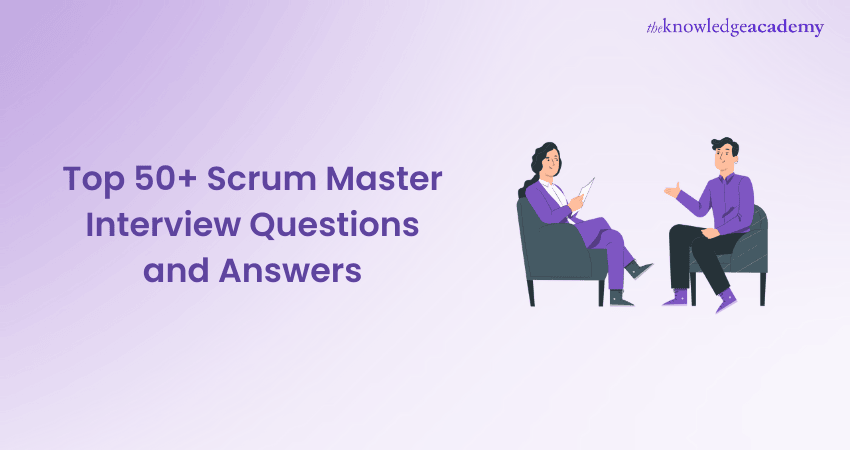
Landing the role of a Scrum Master while learning from Scrum Master Mistakes can be a game-changing career move. But before that can happen, you have the daunting task of impressing the interviewer. There's no alternative to acing the interview other than preparing like a pro and we are here to help you out. This blog assembles more than 50 essential Scrum Master Interview Questions and Answers.
Packed with concise responses, practical insights and real-world wisdom, this blog will ensure that you are not just ready, but unforgettable during the interview. So read on, turn tough questions into spotlights for your expertise, and make a lasting impression on the interview hot seat!
Table of Contents
1) Basic Scum Master Interview Questions and Answers
2) Time Boxing-based Scrum Master Questions
3) Interview Questions for Scrum Master Roles and Responsibilities
4) Scenario-based Scrum Master Interview Questions and Answers
5) Subjective Scrum Master Interview Questions
6) Conclusion
Basic Scrum Master Interview Questions and Answers
Let’s explore more than 50 Scrum Interview Questions and Answers beginning with the Basic Agile Scrum Interview questions that include assessing the candidate’s general understanding of Scrum ideologies. The commonly asked questions Include the following:
1) What is Scrum?
Scrum is an application of the Agile methodology, promoting adaptability and continuous improvement within a team. In Scrum, team members assume accountability for their actions, fostering commitment and enabling self-organisation. This empirical process facilitates learning from both past mistakes and successes, making it a crucial aspect in Scrum Interviews. Crafting a concise and accurate definition of Scrum, along with emphasising its benefits in a business context, is vital for leaving a positive impression on interviewers.
2) Differentiate between Agile and Scrum.
Agile is a philosophy of delivering software to a customer, consisting of a set of principles and values. Meanwhile, Scrum is the application of that philosophy. There are multiple Agile frameworks that are applied in different circumstances. Scrum is an Agile framework used to promote self-organisation and teamwork.
3) What is Scrum of scrum?
Scrum of Scrums refers to a meeting or coordination technique used in the Scrum agile framework, especially in larger projects where multiple Scrum teams are involved. The primary purpose of the Scrum of Scrum is to facilitate communication, collaboration, and coordination among multiple Scrum teams working on interconnected or interdependent components of a larger project.
4) Name some other Agile frameworks.
Some common Project Management Frameworks besides Scrum include the following:
a) Feature-driven Development (FDD)
b) Test Driven Development (TDD)
c) Kanban
d) Crystal
e) Dynamic System Development Method (DSDM
It is generally a good idea to further elaborate on frameworks that you have used and are experienced with in the past.
5) What is Scrum-ban?
Scrum-ban is a combined framework that incorporates the flexibility and visualisation of the Kanban framework, while also incorporating the structure of the Scrum framework. The Scrum-ban methodology is used to meet specific needs, such as adopting a pull-based system and minimising work batching which include hybrid of Scrum board and Kanban board.
6) What are the roles in Scrum?
Scrum Roles refer to individuals involved in a process who hold specific positions and are dedicated to particular tasks. These roles include the Product Owner, the Scrum Master Resume, and the Scrum team.
7) What are Scrum values?
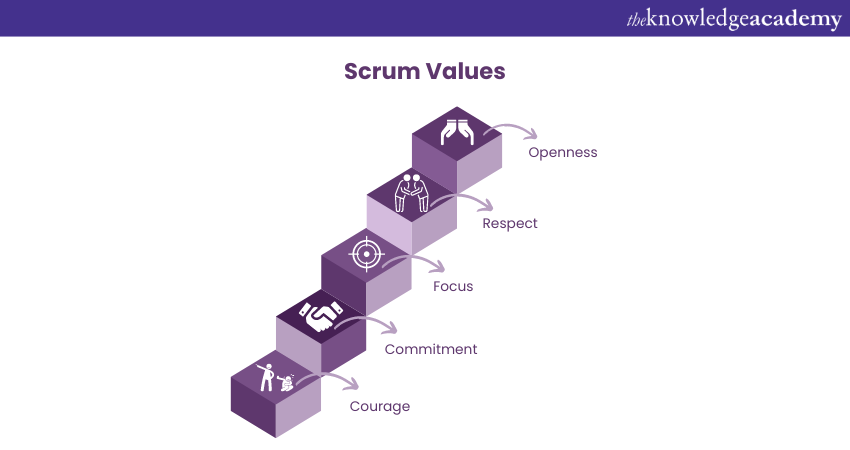
Scrum has five core values, a code of conduct, and ethics that Scrum Team members follow:
a) Commitment: Refers to the dedication of everyone in the team to achieve a goal.
b) Courage: Having the courage to work through challenges and speak honestly to each other.
c) Focus: Avoiding distractions that hinder meeting a goal in a sprint.
d) Openness: Being transparent with stakeholders about difficulties faced during work.
e) Respect: Acknowledging and accepting each other for your skills and expertise.
8) What are responsibilities of the Scrum team?
The Scrum team is responsible for specific tasks, such as the development of the product and ensuring that delivery goals are being met in each sprint. Ownership of one’s work and transparency about challenges are also part of a Scrum team’s responsibilities. Additionally, Scrum team members should collaborate and provide accurate and relevant information during Daily Scrum meetings.
9) What are the three pillars of Scrum?
The Scrum framework is guided by three concepts, which serve as Scrum Pillars. They are as follows:
a) Adaptation: Scrum encourages and embraces changes. As a result, if the demand for the product changes, the Scrum team changes the process to meet the end goal.
b) Transparency: Scum demands that each work process to be visible to every other team member. This helps in avoiding confusion in the future.
c) Inspection: Any progress made within the Scrum process is inspected to avoid deviation from the intended goal. However, it is necessary to keep the inspection limited to a degree that doesn’t interrupt the Scrum Workflow.
10) When should you use Waterfall over Scrum?
The Waterfall model can be implemented instead of Scrum when the requirements are relatively simple. The Waterfall model works exceptionally well for well-defined, easily understood goals with predictable outcomes.
11) What is a Burn-up and Burn-down Chart?
A Burn-up chart is a tool used in Scrum to measure the completed work, and it representing the amount of work to be done in the entire project and a Sprint session. On the other hand, a Sprint Burndown Chart shows the amount of effort remaining for a certain amount of work. During an interview, you can discuss how you have utilised both of these Charts in your experience.
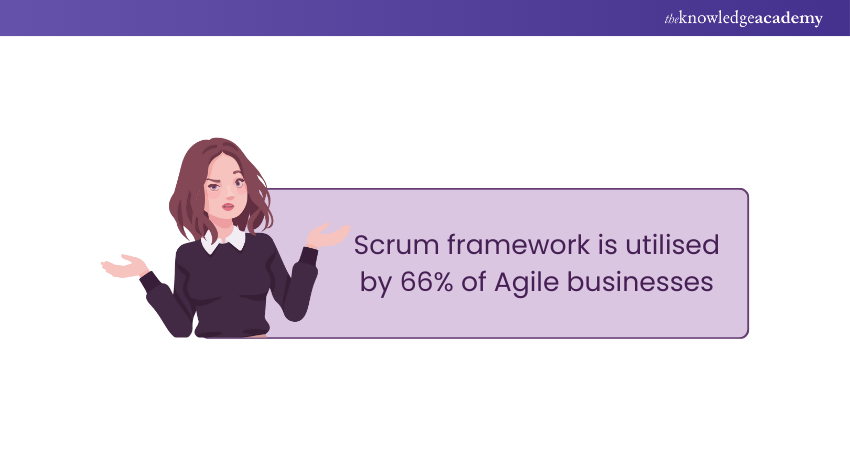
12) What is Confidence Vote in Scrum? Why is it important?
A Confidence Vote is an assessment of a team member's confidence in completing a task, expressed through a visual or verbal indication. Confidence votes typically take place during the Program Increment Planning (PIP) session, where team members indicate their confidence in finishing the task using their fingers or other means. Confidence votes are essential to boost team morale and create an environment that encourages the expression of ideas.
13) What is ‘Scrum of Scrums’?
Scrum of Scrums is an Agile methodology used when multiple Scrum Teams are brought together to work collaboratively. It is commonly used in complex projects to ensure team collaboration while maintaining principles such as transparency, adaptation, and adoption.
14) What is Empirical Process Control in Scrum?
Empirical Process Control refers to a process that can be changed through trial and error. In Scrum, as an empirical process, it can adapt itself based on the changing demands of the products. Empirical Process Control relies on observation and adaption to deliver a product and meet goals with higher efficiency.
15) Who is a Product Owner?
A Product Owner is one of the three critical roles in Scrum, whose main goal is to communicate the intent of the desired product to team members. This helps ensure that the development team’s progress remains aligned with the end goal of the project.
Remember that this would be an excellent opportunity to share any previous experience you have had managing or working with Product Owners. Your personal experience dealing with Product Owner can be used to provide examples and insights on how you have interacted with them in real business settings, allowing the interviewer to gauge your proficiency in working with Product Owners.
16) What are some risks in Scrum?
Some common risks in Scrum are as follows:
a) Risk of exceeding the budget limit
b) Risk of team members lacking appropriate skills
c) Risk of not meeting work targets within the allotted time
d) Risk of user stories and epics not being correctly defined
e) Risk of lacking necessary resources
17) What are the steps involved in Risk Management?
Risk Management encompasses measures taken to reduce the impact and potential of risks in a Scrum-based project. It is an ongoing process that spans from the beginning to the end of a project and involves the following five steps:
a) Identifying Risks: This step involves identifying potential risks and categorising them based on their type, such as environmental risks, regulatory risks, legal risks, and market risks.
b) Analysing Risks: Risk analysis entails assessing the level of threat posed by identified risks to ongoing tasks. It also involves determining how internal factors affect the risk.
c) Ranking Risks: Once the severity of risks is determined, they are ranked based on their severity and prioritised accordingly. Risks that pose a significant threat are prioritised higher, while risks that may cause minor inconveniences are prioritised lower.
d) Countering Risks: Ideally, possible risks should be mitigated to a level that minimally impacts the working process. This is done by communicating with relevant experts and stakeholders, and implementing appropriate measures to address potential issues.
e) Reviewing Risks: After implementing countermeasures, it is important to periodically review the risks to evaluate if they still exist or if further action is required. This ensures that risk management remains an ongoing and proactive process throughout the project.
18) What are the Artifacts of the Scrum Process?
Artefacts in Scrum are tangible and transparent information that is used to assess the development process of the product. The three main Scrum Artifacts are:
a) Product Backlog: The product backlog is a prioritised list of all the items that could be added or changed in the product, such as new features, bug fixes, and infrastructure changes. It serves as the single source of requirements for the Scrum team to deliver a valuable product.
b) Sprint Backlog: Sprint backlog is a subset of the product backlog that contains the tasks selected by the Scrum team to be completed during a specific sprint. These tasks are based on the team's goal for that sprint and are added to the sprint backlog for the team to work on.
c) Product Increment: The product increment is the sum of all the items completed in the product backlog, along with the value of the previous sprint's increment. It represents the potentially releasable product that is delivered at the end of each sprint and should be in a shippable state.
19) What are some drawbacks to using Scrum?
Scrum has multiple benefits in the business environment, but it’s important to acknowledge the limitations of Scrum as well. Some of the Scrum Advantages and Disadvantages include
a) Scrum relies heavily on experience, so a lack of experience can impede the implementation of Scrum methodology.
b) Scrum is highly dependent on teamwork and collaboration, so a lack of cooperation among team members can adversely impact the results.
c) An inexperienced Scrum Master can have a negative impact on the project’s outcome.
d) Scrum may not function optimally when tasks are not properly defined.
e) Scrum may face challenges in scaling with large, complex projects, making it more suitable for smaller projects.
20) Differentiate between MVP, MMP and MMR.
Here is the difference between MVP, MMP and MMR are:
a) Minimum Viable Product (MVP): Minimum Viable Product (MVP) a lean startup concept emphasises the importance of learning during development. It allows you to understand and test an idea with an initial version designed for users. MVP involves collecting necessary data and learning from it by enabling users to access and interact with the product, while analysing their usage and perception.
b) Minimal Marketable Product (MMP): Refers to a product description with minimalistic details of user requirements, including its features. It aims to reduce the time required for marketing efforts.
c) Minimum Marketable Release (MMR): Refers to a product that can be released in the market with the minimum number of features demanded by the customer. MMR is used to reduce marketing time and each feature is incrementally updated, adding more value to the product over time.
21) What does DoD mean?
Definition of Done (DoD) refers to the standard criteria or quality checklist that must be met for a deliverable feature to be considered complete in a product. It includes various aspects such as code quality, comments, testing (such as unit and integration tests), documentation of designs, and release notes. These criteria act as a quantifiable measure for the progress of project development.
DoD is useful in several ways, including the following:
a) Defining the scope of work for each iteration or sprint
b) Using burndown charts for tracking progress and efficiency
c) Ensuring timely feedback
d) Facilitating proper understanding of product backlog items during backlog walkthroughs
e) Creating checklists for items in the product backlog
Additionally, DoD involves Product Owners in the sprint and sprint retrospective meetings, allowing them to review and provide input on the completeness of deliverables.
22) How to deal with Score Creep?
Scope creep refers to an uncontrolled change that gets added without checking its effect on factors like cost, time, and scope. To avoid scope creep, it is important to closely monitor the work and communicate well with the team. It is important to establish clear project objectives and requirements, communicate them effectively with the team, and closely monitor the work to ensure that any changes align with the established goals. Additionally, having backup plans and being willing to say no to changes that may negatively impact the project can help prevent scope creep in Scrum.
23) What do you understand about Scope Creep?
Scope creep refers to the addition of unauthorised features to a product or its requirements. It can negatively impact a project's cost, time, and scope. To manage scope creep, it is important to establish clear project objectives and requirements, communicate them effectively with the team, and closely monitor the work to ensure that any changes align with the established goals. Additionally, having backup plans and being willing to say no to changes that may negatively impact the project can help prevent scope creep in Scrum.
Time Boxing based Scrum Questions
Scrum Questions based on time and duration units:
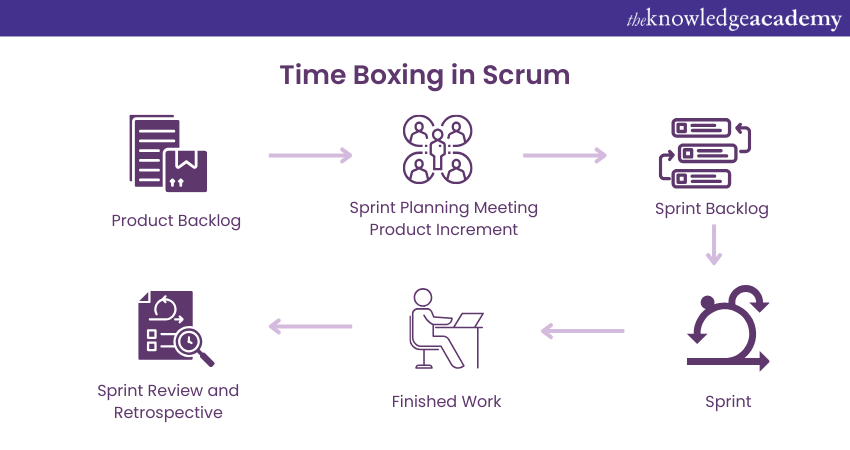
24) What do you mean by timeboxing? When can a Sprint be cancelled, and by whom?
Scrum Timebox involves allotting a specific amount of time to a particular task in Scrum. A time box is a measurement unit for the time taken to achieve a task. A Sprint, which is also a time-boxed duration, can be cancelled by the Product Owner. Sprints typically last from one to four weeks.
25) What do you mean by Sprint in Scrum?
Scrum Sprint is a time-boxed period dedicated to achieving specific tasks. It is a fundamental element of Scrum methodology designed to make the work process more efficient. Sprints break down larger projects into smaller, more manageable components, resulting in higher-quality results. Sprints typically last between one to four weeks, with two weeks being the most common duration.
26) What is Sprint 0 and Spike?
Sprint 0 in Scrum refers to the initial phase of a project where the team does the minimum amount of work necessary to set up the project's framework and infrastructure. It is designed to ensure that the project starts on a solid foundation.
Scrum Spike is an investigative activity that is used to reduce technical risks and gain a better understanding of the requirements. It involves conducting a time-boxed experiment or research that can help the team make informed decisions about how to proceed. Spike activities can include Extreme Programming (XP) techniques or other methods that help the team increase the reliability of the project.
27) What happens in a Sprint Retrospective?
A Sprint Retrospective in Scrum is a time-boxed meeting held at the end of each Sprint where the team reflects on the past Sprint and discusses ways to improve. During the Retrospective, the team reviews what went well, what could have been better, and what can be done to improve in the future.
The primary goal of the Sprint Retrospective is to identify areas for improvement and to take action to address them in the next Sprint. The data collected from the Retrospective is used to make the team's future Sprints more effective.
Sprint Retrospective typically takes place after the Sprint Review meeting
28) What happens in Daily Stand-up sessions?
Daily Stand-up sessions are held for 15 minutes to discuss the progress of a given task. They cover the number of tasks completed, tasks that are yet to be done, and any obstacles the team might be facing while working on them.
29) Is a daily meeting suggested for all teams, irrespective of their size or experience level? Explain.
Daily meetings can be a useful practice for teams of all sizes and experience levels. However, the nature of the Scrum meeting can vary depending on the team's specific needs. Here's how different teams should hold meetings:
a) Experienced small team: A quick check-in or update during the day can be enough to stay aligned and make progress.
b) Unexperienced small team: Daily stand-ups can be vital to help team members with the technicalities of their tasks and to familiarise them with Scrum concepts.
c) Large team: A more formal meeting can be helpful to keep everyone on the same page. A daily meeting may still be necessary, but it may need to be longer and more structured than a stand-up meeting for a small team.
d) Distributed team: Video conferencing tools can be used to have an organised meeting with each other, regardless of location.
30) What is Velocity?
Scrum Velocity is a metric that measures the amount of work completed during a sprint. It is calculated based on the number of user stories finished, and provides an estimate of the project completion time.
Learn about the key Scrum and Scrum Master techniques with our Scrum For Teams Sign up for the course now!
Interview Questions for Scrum Master roles and responsibilities
The following are some questions based on your Scrum Master roles and responsibilities.
31) Who is a Scrum Master? And what do they do?
A Scrum Master is a person who teaches a team about the values and principles of Scrum and promotes its application. A Scrum Master has a good understanding of Scrum theory and practices and can remove any distractions that can hinder the working of team members. Additionally, a Scrum Master can ensure the delivery of quality work during the Sprint period, contributing to competitive Scrum Master Salary Benefits.
32) What are the key skills of a Scrum Master?
Some common skills of a Scrum Masters include the following:
a) A deep understanding of Scrum and Agile ideologies and the ability to teach them to the team members.
b) Excellent organisational skills with the ability to handle discord between team members.
c) Command over the technology used by the team members in the project.
d) Ability to be a servant leader.
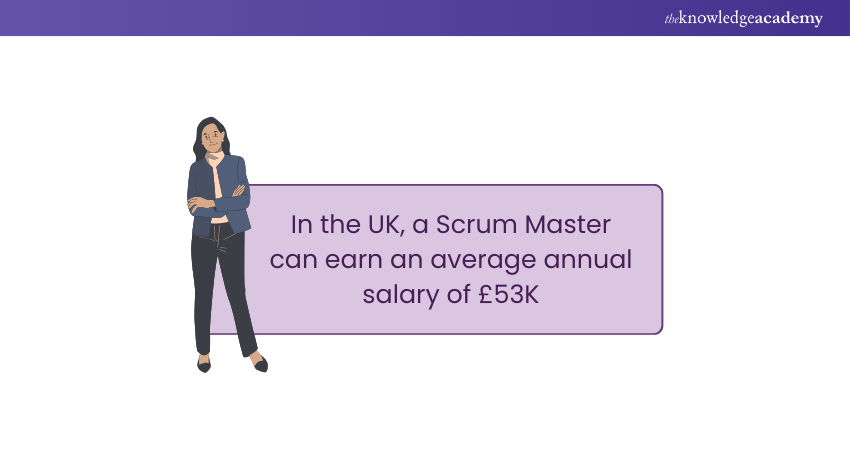
33) What is the role of a Scrum Master in a Sprint Retrospective?
A Scrum Master's role in a Sprint Retrospective, which is among the Scrum Events, is to facilitate the team's discussion on what went well during the sprint, what didn't go well, and what areas could be improved. The Scrum Master should ensure that the team stays focused on the retrospective's purpose. They Should encourage open communication and collaboration, and guide the team towards identifying and committing to specific actions that can improve their processes and practices in the upcoming sprints. The Scrum Master should also ensure that the team members are following the Scrum framework and principles during the retrospective.
34) How can Scrum Master's ensure timely delivery of action items?
Scrum Masters can ensure timely delivery of action items by following these practices:
1) During the Sprint Retrospective, the Scrum Master should ensure that the team identifies specific action items and these items assigned them to team members.
2) The Scrum Masters should ensure that the action items are included in the team's product backlog or Sprint backlog, depending on their priority.
3) The Scrum Masters should monitor the progress of the action items throughout the Sprint by reviewing the backlog during the Daily Scrum and ensuring that the team members are making progress on their assigned tasks.
4) The Scrum Masters should follow up with the team members regularly to ensure that they are on track and provide support if needed.
5) The Scrum Masters should address any obstacles that prevent the team members from completing their assigned tasks.
6) A good Sprint Retrospective uses retrospective trackers to monitor action items and the appropriate Scrum tools and techniques based on the team’s needs and preferences.
35) How can a Scrum Master be a Servant Leader?
A Scrum Master can become a servant leader by following these practices:
1) Putting the needs of the team above their own needs.
2) Facilitating the team's decision-making process and empowering them to make decisions independently.
3) Serving the team by removing any obstacles that prevent them from achieving their goals and ensuring that they have the necessary resources.
4) Providing guidance, coaching, and mentoring to the team members to help them grow and develop their skills.
5) Encouraging a culture of continuous improvement by facilitating feedback, retrospectives, and other opportunities for the team to reflect on their work and identify areas for improvement.
36) How is estimation done in a Scrum Project?
Estimation is a critical part of the Scrum project's planning process. it is typically done based on the relative complexity of the user stories. The estimation process involves breaking down the user stories into smaller, more manageable tasks, and then assigning a level of effort to each task. The level of effort is typically measured using a points system, such as the Fibonacci sequence (1, 2, 3, 5, 8, 13, 21, etc.) or t-shirt sizes (XS, S, M, L, XL, XXL, etc.).
The team members can use different scales for estimation, depending on their preferences and the project's needs. The important thing is that the scale should be easily understandable and consistent across the team.
Once the team has estimated the level of effort for each task, they can use this information to plan the Sprint and determine how many tasks they can complete within the sprint timeframe. The team should also review and update the estimates regularly throughout the project to ensure that they remain accurate and reflect any changes in the project's scope or complexity.
37) How does a Scrum Master track Sprint progress?
A Scrum Master can track Sprint progress by following these practices:
1) Facilitating the Daily Stand up meetings to monitor the progress of the Sprint and identify any obstacles that need to be addressed.
2) Conducting Sprint Retrospectives to review the Sprint's outcome and identify areas for improvement in the team's processes and practices.
3) Reviewing and updating the Sprint Backlog regularly to ensure that it reflects the team's progress and priorities.
4) Using time-boxing to ensure that the team stays focused on the Sprint goal and delivers the expected value within the Sprint timeframe.
5) Monitoring the team's velocity, which is the amount of work they can complete within each Sprint, and using it to forecast the project's progress and release dates.
6) Tracking metrics such as defect density, escaped defects, and Sprint burn-down to identify trends in the team's performance and identify areas for improvement.
38) When should a Scrum Master not act as a facilitator?
A Scrum Master should not act as a facilitator in the following situations:
1) When the Scrum Master has a personal stake in the outcome of the facilitation process, as this may lead to bias or a conflict of interest.
2) When the Scrum Master lacks the necessary skills or expertise to facilitate the process effectively. This may result in confusion, misunderstandings, or frustration among the team members.
3) When the Scrum Master is a direct participant in the discussion or decision-making process, as this may compromise their ability to remain neutral and impartial.
4) When the Scrum Master is absent or unavailable, This may delay or disrupt the facilitation process and hinder the team's progress.
In these situations, the Scrum Master may delegate the facilitation role to another team member or an external facilitator who has the necessary skills and expertise to lead the process effectively. By doing so, the Scrum Master can ensure that the team's needs are met, and the facilitation process remains objective and productive.
Scenario-based Scrum Master Interview Questions and Answers
39) In Scrum, what do you mean by user stories? What benefits come from using them? What is a User Story?
A user story is an informal description of software features from the user's perspective. User stories describe how a feature of the software can benefit the user. Using user Stories allows a development team to put the user as the centre of discussion, ensuring customer satisfaction.
A user story uses non-technical terminology to describe the development team's efforts. Additionally, it helps the development team understand what they are creating and why.
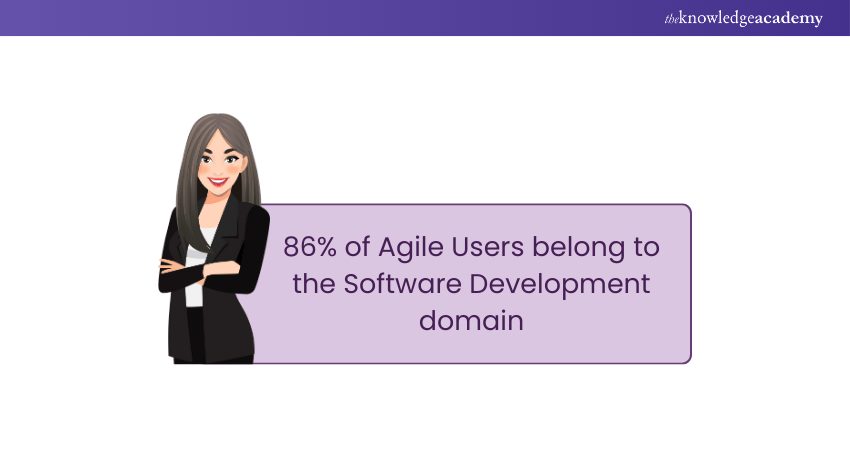
40) How are user stories, epics, and tasks different?
a) User Stories: Simple description of software features created from the user's perspective.
b) Epics: An epic is a collection of multiple user stories that share similarities. Epics are generally larger and broader in scope than individual user stories.
c) Tasks: Tasks are user stories that are broken down into smaller components. They are the smallest units of work in Scrum and are used to measure progress. Tasks are usually worked on by a team of two people and are more specific than user stories.
41) Explain user story structure with an example. What is the structure of a good story?
A good user story structure includes the person for whom the product is being built, the product being made, and why the product is being built. The user story should address what value it can bring to the user. According to Bill Wake’s criteria, a good user story is Independent, Negotiable, Valuable, Estimable, Small, and Testable. These criteria are also referred to as “INVEST”. The structure of a user story is as follows:
As a
I want
So that .
Example:
A user story of a person purchasing a coding course would look like this:
As a customer,
I want to purchase coding practices online,
So that I can become proficient at coding.
42) Why aren't user stories estimated in man-hours?
User Stories cannot be accurately estimated in man hours because certain activities, such as legacy work, can be difficult to assess in terms of time. Man-hour estimates can also become irrelevant if a team member completes a task while another member is still making an estimation. Additionally, the time taken to complete a task can vary greatly depending on the experience of the developer. Therefore, it is more appropriate to use relative sizing techniques, such as story points, to estimate user stories in Scrum.
43) What is User-story Mapping?
User-story Mapping is a technique for organising user stories that helps with release planning, system backlog management, and system functionality design. User-story mapping arranges user stories on a horizontal axis based on priority and on a vertical axis based on their level of complexity or sophistication. This technique helps to create a visual representation of the entire user journey and enables the team to understand how each user story fits into the big picture, making it easier to prioritise tasks and plan releases accordingly.
Gain detailed knowledge of Scrum Master techniques with Scrum Master Certification!
Subjective Scrum Master Interview Questions
Now, let’s take a look at Scrum-based situational questions:
44) Why do you wish to be a Scrum Master in this company?
This question aims to assess your motivation and how well your personal career goals align with the company’s vision, culture, and projects. The interviewers are looking for evidence that you’ve researched the company and are genuinely interested in contributing to its success as a Scrum Master.
You can answer it as: "I am drawn to the role of Scrum Master at your company because of the innovative projects and collaborative culture here that align perfectly with my passion for nurturing Agile teams and driving continuous improvement. Your focus on [a key value or project from the company, e.g., "customer-centric products"] excites me because it resonates with my commitment to empowering teams to deliver exceptional results"
45) How should you deal with a difficult stakeholder?
You can answer like this: "Dealing with a difficult stakeholder requires clear communication, empathy, and strategic problem-solving. First, I’d listen to their concerns to understand their perspective and build trust. This will create an open dialogue where they feel heard. Next, I’d align our discussions with the shared goals and emphasise how collaboration benefits the project. Additionally, I would maintain transparency by informing them with regular updates and involving them in key decision points to make them feel valued and engaged."
46) How would you handle discord between the team members?
You can answer this way: "The first step I take in addressing the discord between team members is to identify the root cause of the disagreement. As a Scrum Master, staying calm and understanding the underlying issue is essential. Pinpointing the source of the problem is crucial for resolving the conflict.
Another important aspect is to prevent the conflict from escalating. I make it a priority to intervene early to stop the disagreement from growing into a bigger issue.
Alternatively, I may provide individual coaching to team members to resolve the problem more personally. This approach helps me understand each person’s perspective and work toward a resolution tailored to their needs."
47) Your team member couldn’t complete their goal during a Sprint period, what will you do?
Your answer must fall along these lines: "As a Scrum Master, I lead the team and ensure we meet our goals. If a team member cannot complete their goal during a Sprint period, I start by conversing with them to understand the reasons behind their performance.
Various factors can contribute to a team member’s inability to meet their goal, such as personal challenges, a lack of understanding of a tool, or being overworked. Once I identify the cause, I will support the team member effectively through solutions such as redistributing the workload or providing training to help them enhance their skills."
48) How would you handle an error that has already taken place?
You can answer the following way: "When an error has already occurred, my first step as a Scrum Master is to calmly create an environment where the team feels safe discussing it openly. I’d facilitate a focused session to analyse what went wrong, ensuring that the conversation is solution-oriented rather than blame-focused. Next, I’d guide the team in brainstorming preventive measures to avoid similar errors in the future and incorporate these improvements into our processes. Whether that means refining the Definition of Done, enhancing testing procedures, or improving communication channels, my focus would be on strengthening our practices."
49) What is your experience with the industry?
Your answer can be along the following lines: "I have accumulated extensive experience as a Scrum Master working across industries that embrace Agile methodologies. For example, I’ve led teams in the Software Development sector, managing projects that required tight collaboration between testers, developers, and product owners to deliver high-quality products within short timelines. My experience extends to the finance industry, where I ensured Agile transformations to improve the efficiency of cross-functional teams. Additionally, I’ve worked with marketing and creative teams, adapting Agile frameworks to fit non-technical environments."
50) Describe how would you scale Scrum in our organisation?
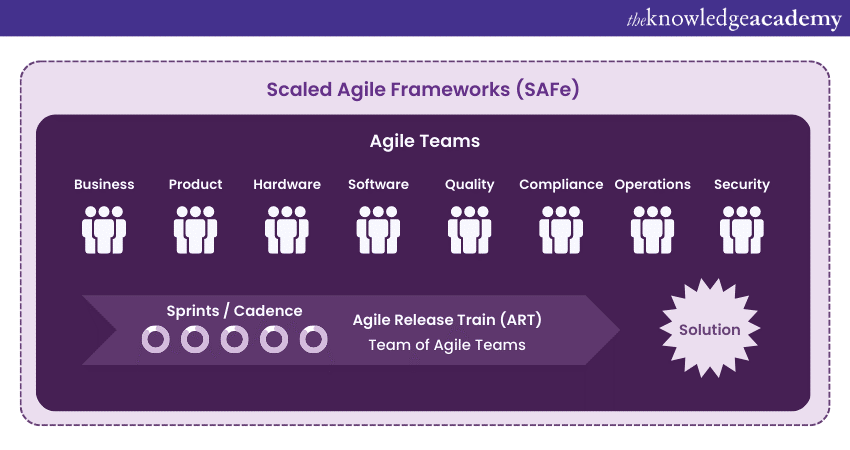
You can answer this way: "I would first assess the current Agile maturity level and identify the teams and departments that can benefit the most from scaling efforts. I’d introduce a proven scaling framework, such as the Scaled Agile Framework (SAFe), LeSS (Large Scale Scrum), or Nexus, tailored to your organisation’s size and needs.
To coordinate and synchronise activities across multiple teams, I’d implement scaled events, such as cross-team sprint planning and scaled retrospectives. Monitoring progress and collecting feedback would be an ongoing process to refine the approach as necessary."
51) Tell us About your favourite Scrum event?
This question is partly objective, as it tests both your integrity as a leader and your knowledge of Scrum. Scrum has four events: Sprint planning, Daily Scrum, Sprint Review, and Sprint Retrospective. While each of these events is important, your answer should reflect your experience, making your response much more organic.
For example, you can say that “My Favorite Scrum event is the Sprint Retrospective because it allows me to analyse the mistakes we made throughout the project, reflect on them, and improve further. The Sprint Retrospective also enables me to track progress by reviewing changes my team has implemented.”
52) One of your team members doesn’t like Scrum and its ideologies, which is affecting the progress of the project. How would you handle it?
You can answer this way: "The first step I’d take is to have a one-on-one conversation to understand this team member's concerns. It’s important to approach this with an open mind, because their resistance could stem from past experiences. Their perspective can help me identify any misconceptions or valid points they might have.
Once I understand their concerns, I’d explain how Scrum benefits both the individual and the team, emphasising its transparency, flexibility, and focus on team collaboration. I’d also share examples of how Agile practices have led to positive outcomes in similar projects, helping to build trust in the process. I’d provide coaching or workshops to deepen their understanding of Scrum’s value if necessary."
52) What makes Agile Coach different from a Scrum Master?
The key distinctions between the roles of an Agile Coach Vs Scrum Master lie in their scope and focus within the organization. While an Agile Coach vs Scrum Master both contribute to Agile success, an Agile Coach primarily guides organisational transformation, fostering an Agile mindset across various teams and departments.
In contrast, a Scrum Master is dedicated to a specific team, ensuring the proper implementation of the Scrum framework and facilitating collaboration within that team. The crucial difference in the agile coach vs Scrum Master dynamic is the organizational versus team-specific focus in their respective roles.
From Agile coaching to project execution—learn how Scrum Master vs Development Manager compare!
Conclusion
This brings us to the end of the Scrum Master Interview Questions and answers, you have got an idea of the type of questions asked during a Scrum interview. Thank you for reading; prepare well and become a step closer to land your dream job.
Learn about common Scrum based terminologies with Scrum Overview course!
Frequently Asked Questions
Upcoming Project Management Resources Batches & Dates
Date
 Scrum Master Certification
Scrum Master Certification
Thu 20th Feb 2025
Thu 27th Feb 2025
Thu 6th Mar 2025
Thu 13th Mar 2025
Thu 20th Mar 2025
Thu 27th Mar 2025
Thu 3rd Apr 2025
Thu 24th Apr 2025
Thu 1st May 2025
Thu 22nd May 2025
Thu 5th Jun 2025
Thu 19th Jun 2025
Thu 3rd Jul 2025
Thu 17th Jul 2025
Thu 31st Jul 2025
Thu 14th Aug 2025
Thu 11th Sep 2025
Thu 25th Sep 2025
Thu 2nd Oct 2025
Thu 9th Oct 2025
Thu 16th Oct 2025
Thu 23rd Oct 2025
Thu 30th Oct 2025
Thu 6th Nov 2025
Thu 13th Nov 2025
Thu 20th Nov 2025
Thu 27th Nov 2025
Thu 4th Dec 2025
Thu 11th Dec 2025
Thu 18th Dec 2025






 Top Rated Course
Top Rated Course



 If you wish to make any changes to your course, please
If you wish to make any changes to your course, please


